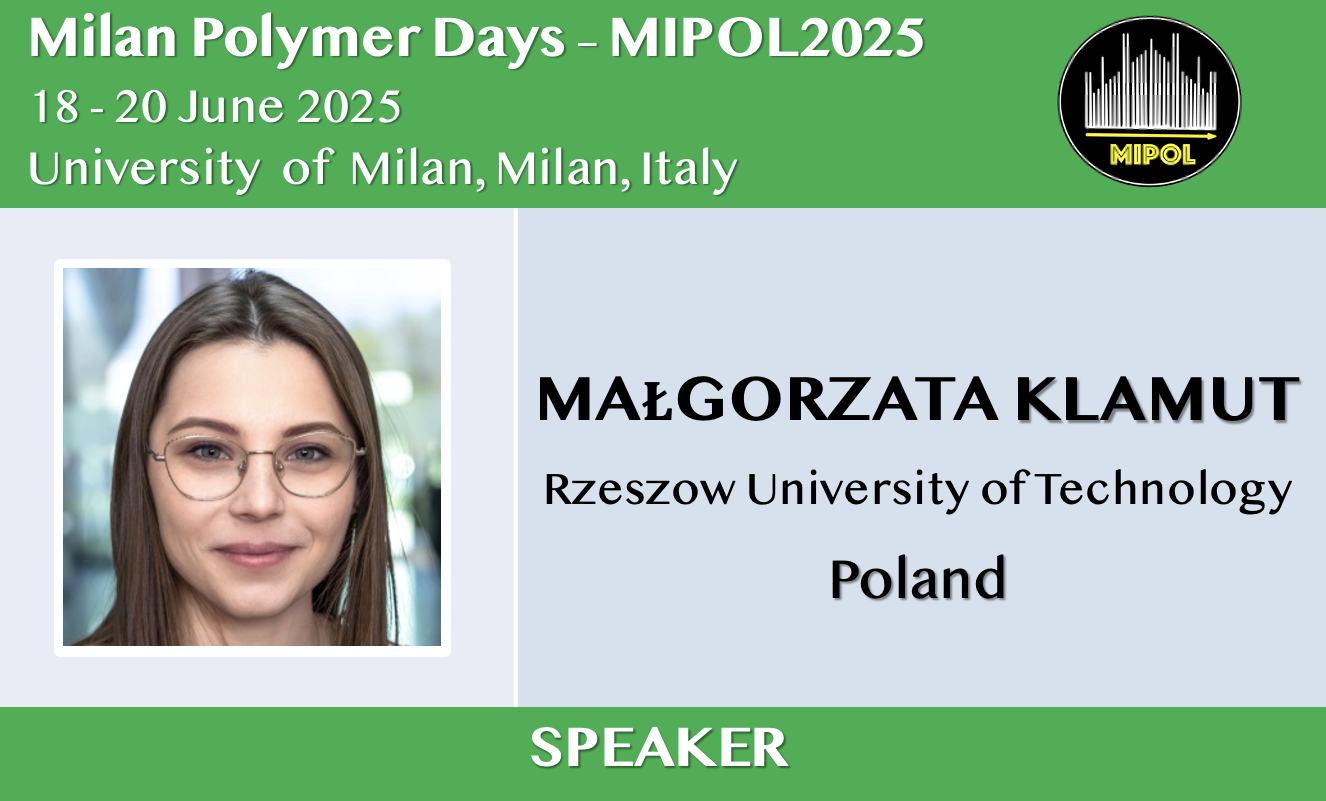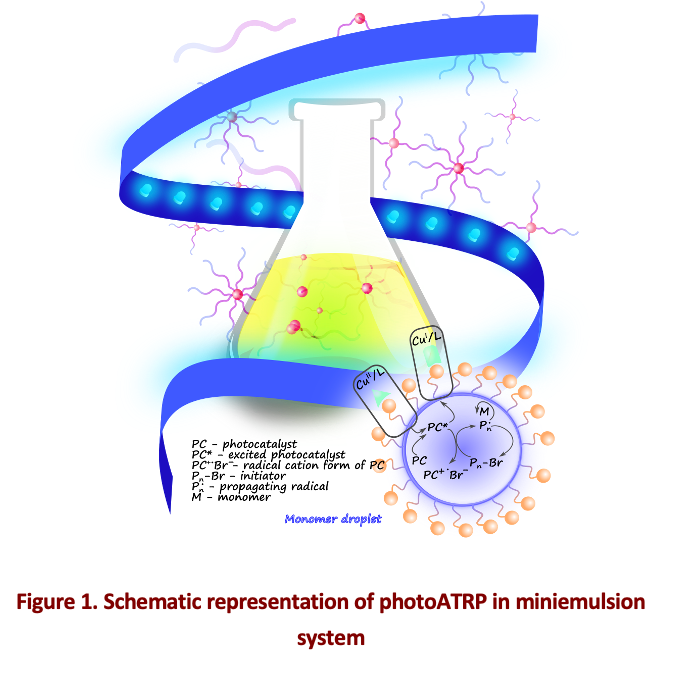Shedding new light on novel photocatalytic systems for photo-mediated atom transfer radical polymerization
Abstract

The increasing demand for energy-efficient and environmentally friendly methods in the controlled synthesis of polymeric materials has become a key focus in modern research [1]. Two approaches are particularly favored for their economic and ecological benefits: photopolymerization and polymerization in aqueous dispersed systems. Photopolymerization stands out due to its versatility, cost-effectiveness, and reduced energy consumption, while aqueous dispersed systems minimize or even eliminate the emission of volatile organic compounds (VOCs) [2]. Among promising organic photosensitive compounds, terphenyls have attracted significant attention. These compounds utilized as organic photocatalysts are able to convert light energy into chemical process, and are easily tunable. The modification of the chromophore core with various functional groups enables the precise adjustment of their optical and redox properties. This, in turn, allows the absorption spectrum to be shifted towards visible light, thus increasing the safety of working on such a system [3]. Modifications allow for enhanced control over their photocatalytic efficiency, making them valuable in photopolymerization processes [4]. By facilitating the synthesis of well-defined polymers with tailored properties, ATRP continues to play a crucial role in advancing polymer engineering and material development. In this context, terphenyl-based photocatalysts have been successfully applied in the polymerization of methacrylic monomers using photo-mediated atom transfer radical polymerization (photoATRP). This process, conducted in heterogeneous aqueous dispersed systems under visible light irradiation (460 nm), has enabled the synthesis of polymers with diverse architectures. The structures obtained range from linear and block copolymers to more complex forms such as star-like configurations. Experimental findings demonstrated that polymerizations proceeded in a controlled manner when utilizing two distinct terphenyl derivatives as photocatalysts. These results highlight the potential of terphenyl-based systems for advancing sustainable and efficient polymer synthesis. By integrating photopolymerization techniques with aqueous dispersed systems further development of innovative materials while reducing environmental impact, is possible.

References
- P. Anastas, N. Eghbali. Chem. Soc. Rev. 2010, 39, 301.
- H. Shao, R. Long, H. Xu, P. Sun, G. Wang, Y. Li, S. Liao. Molecules. 2024, 29, 2763.
- W. Tomal, P. Szymaszek, M. Bilut, R. Popielarz, T. Świergosz, J. Ortyl. Polym. Chem. 2022, 13, 4650.
- C. Wu, N. Corrigan, C.-H. Lim, W. Liu, G. Miyake, C. Boyer. Chem. Rev. 2022, 122, 5476.
Acknowledgments
Financial support from Ministry of Education and Science under the program "Students Research Clubs creates innovations" (no: SKN/SP/601084/2024) and from National Science Centre in Poland as a part of the SONATA BIS 10 project (no: 2020/38/E/ST4/00046).

